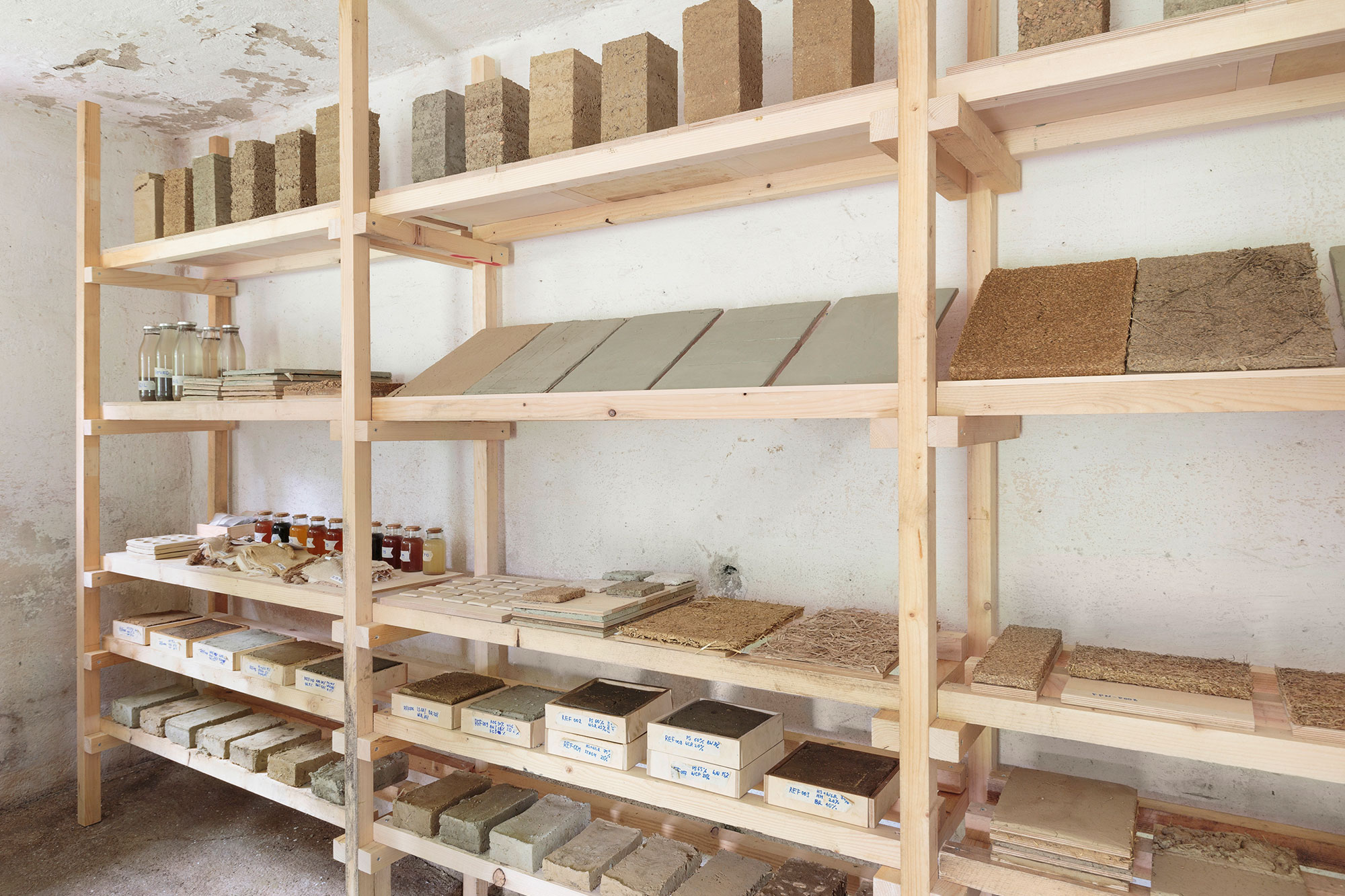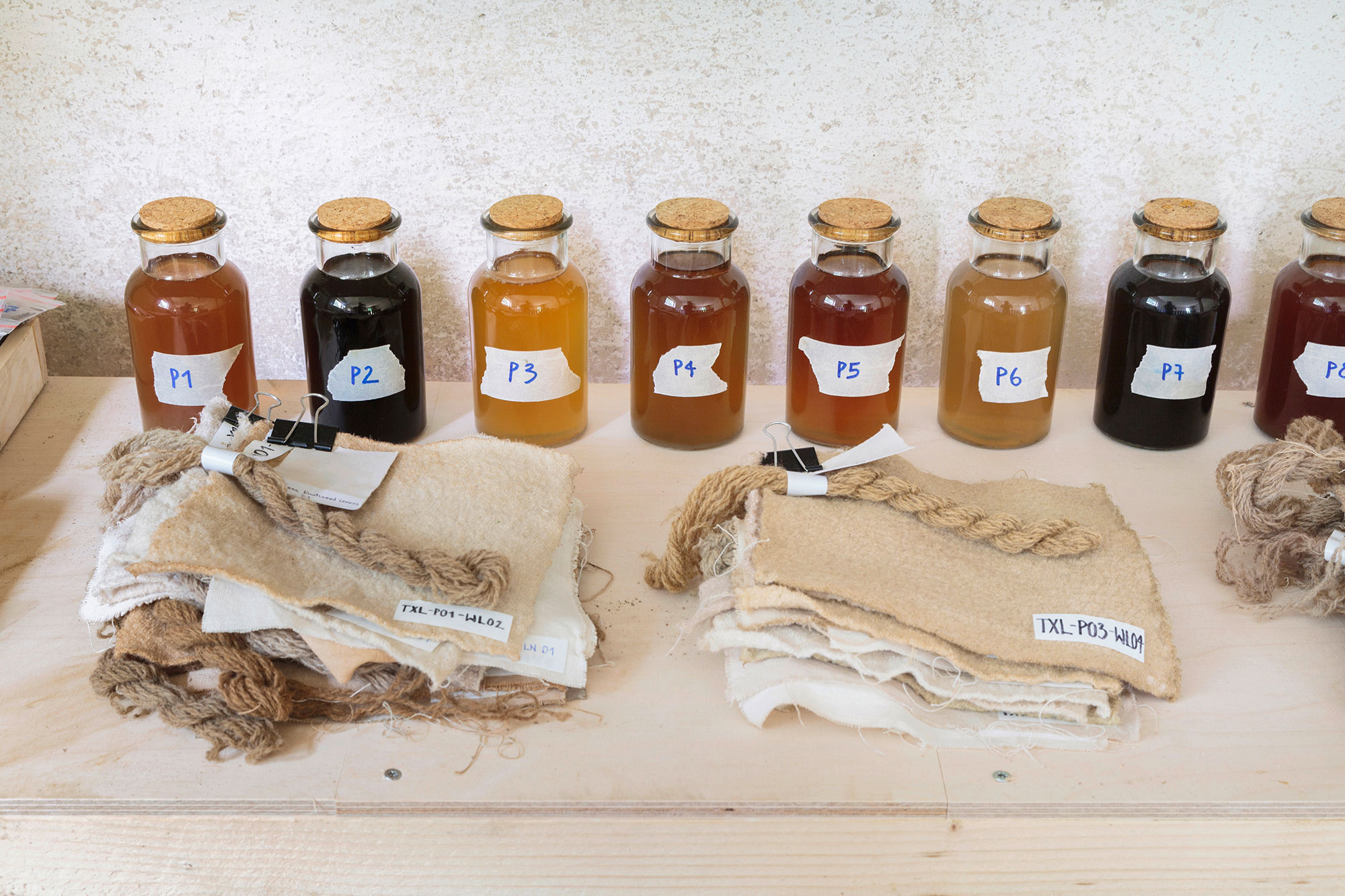Culture in Residency: Material Library
As part of the LINA Fellowship and collaboration with the Institute of Architecture and Design, Estelle Jullian, Thomas Amann, and I held a workshop with the Architecture students of TU Vienna that mapped out the ecological and industrial material landscape around the Campus of the Vienna Boys’ Choir. From these resources the students developed material recipes that would apply these so-called waste streams in a library of local architectural materials.

The Material Library has now permanently moved into the pig sty on the Campus of the Vienna Boy’s Choir in Sekirn, Austria, to inspire and inform future workshops.
How can we live – and create – on a damaged planet? If, as the philosopher Baptiste Morizot describes, the ecological crisis is also a crisis of sensitivity, how can we feel, understand and weave new relationships with respect to the territory and the matter of the objects that constitute our own daily life and the more-than-human life that surrounds us? As the architect tests the role of the mediator to help foster these connections, which tools, methodologies and (knowledge) collaborators are needed and which architectural possibilities spring from this framework?
The slowly deteriorating existing buildings and varied landscape of the Vienna Boys’ Choir campus offer a testing ground for radical strategies of adaptive reuse through local resources and material waste streams. The workshop explored the local landscape that is characterized by its partially natural and its partially industrial material and waste streams. The students mapped these local material streams directly on the territory and in regional proximity to Sekirn to trace the resources for our workshop.

The library includes several died textile samples and liquid pigments extracted from local invasive plant species.
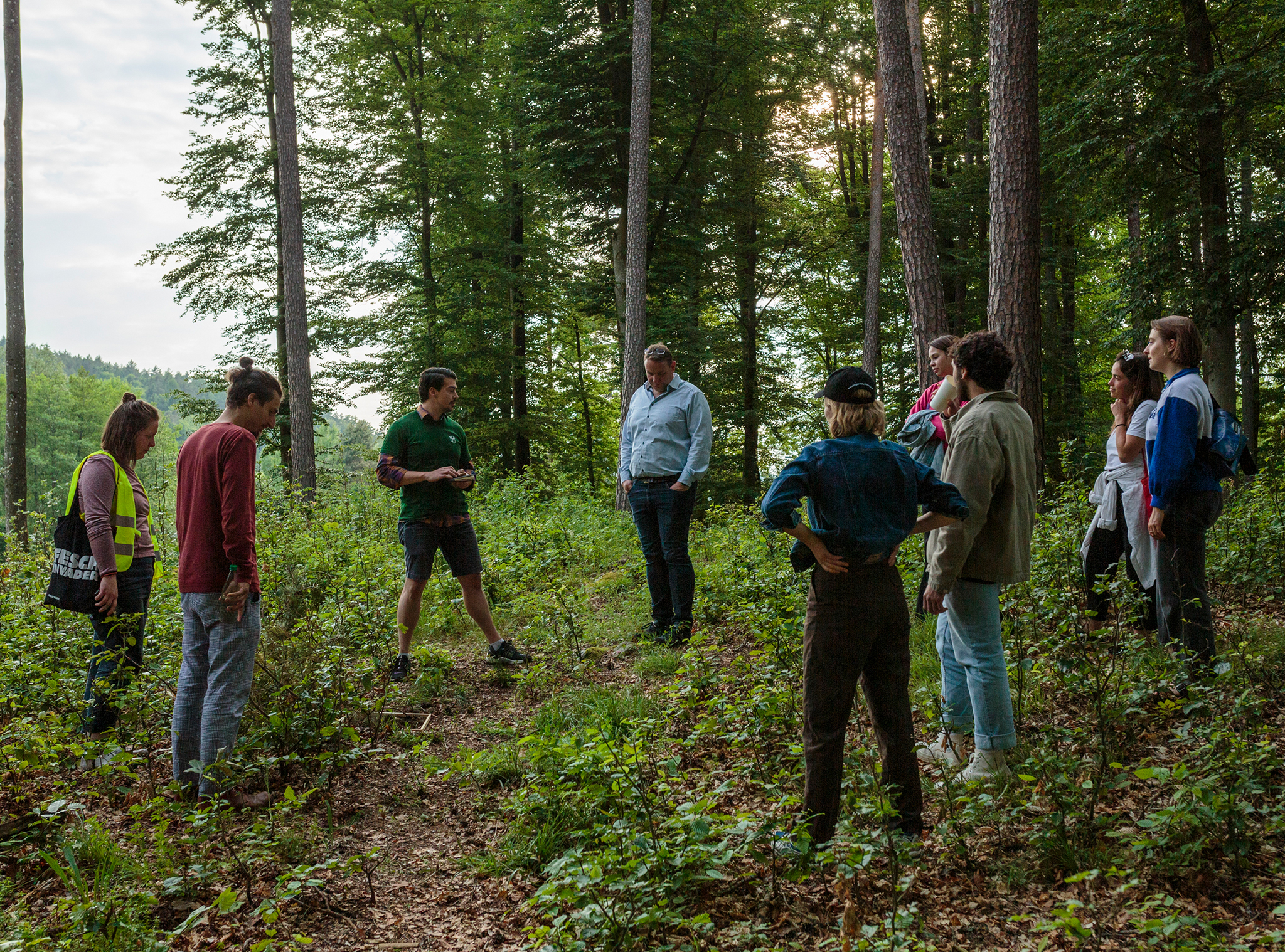
The Material Library is closely connected to the territory that houses it. Tours of the territory reveal these connections between the local ecology of the soil, lake and forrest to the material palette.
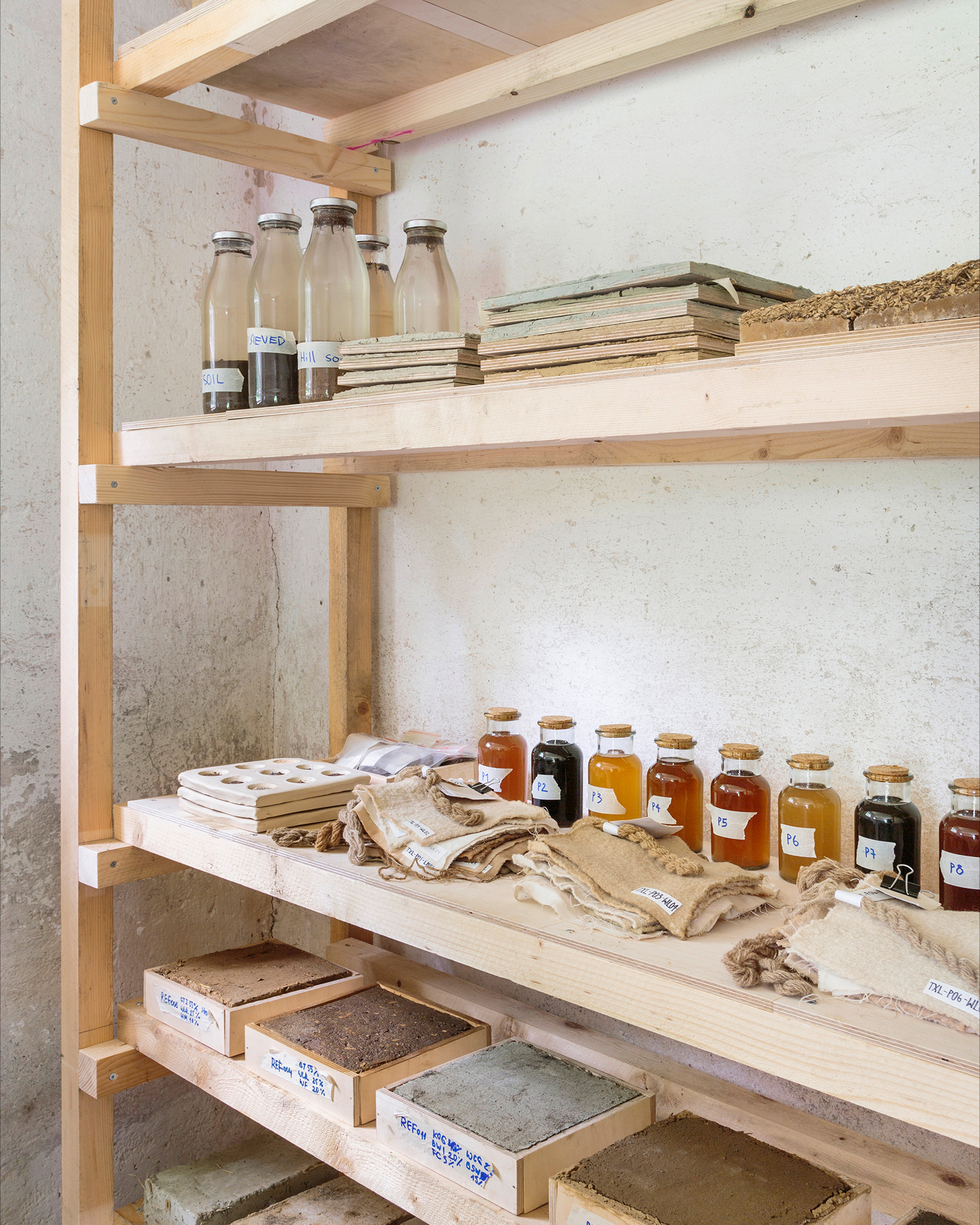
The samples contain both successful and failed experiments to inform future material research.
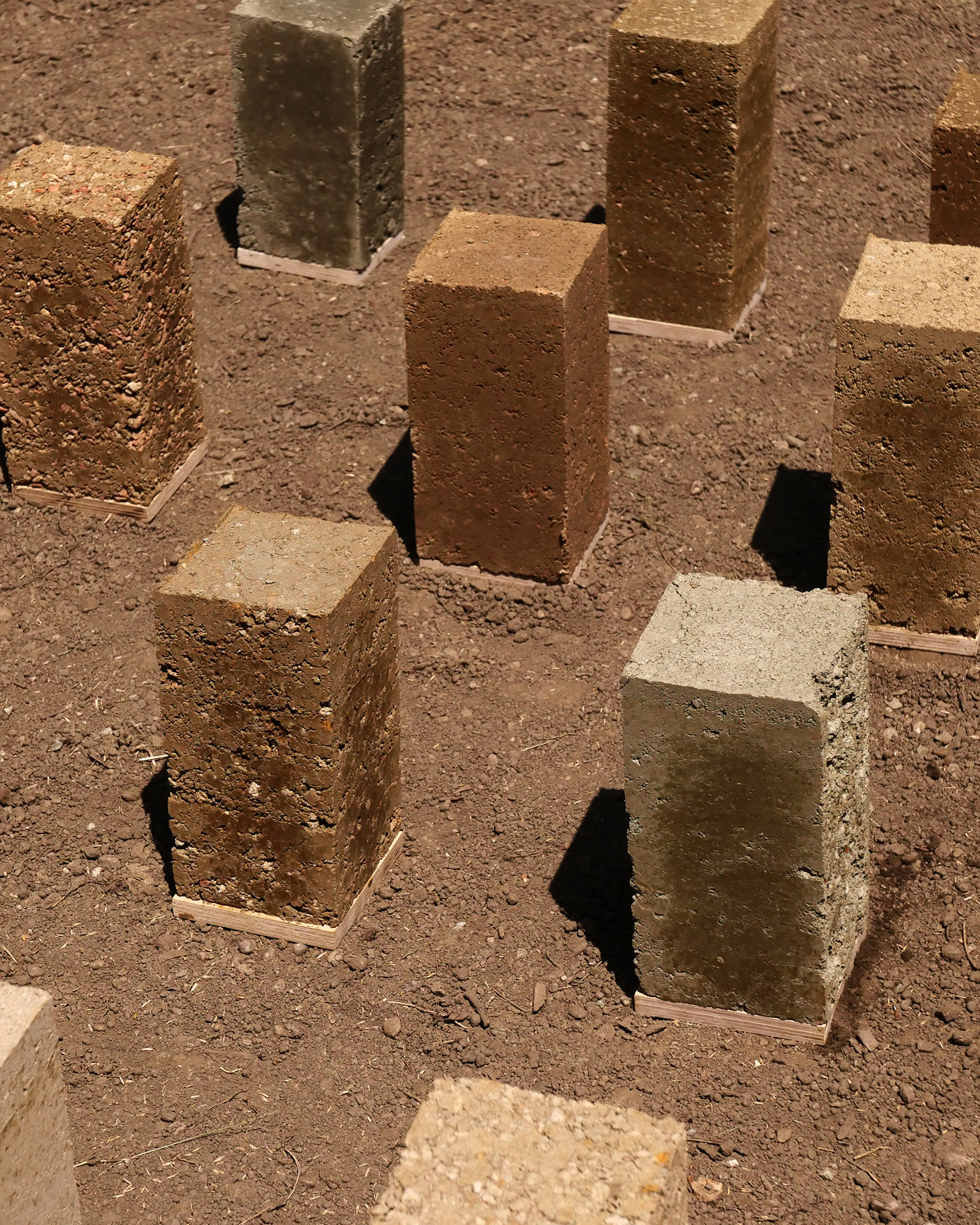
The students tested the use of crushed brick waste, stone dust, and mixed crushed construction waste among other local material streams in the development of a local rammed earth recipe.

All recipes began with a collection of raw material samples from agricultural and industrial (waste) material streams like the invasive Japanese knotweed, waste sheep wool, or crushed construction waste.
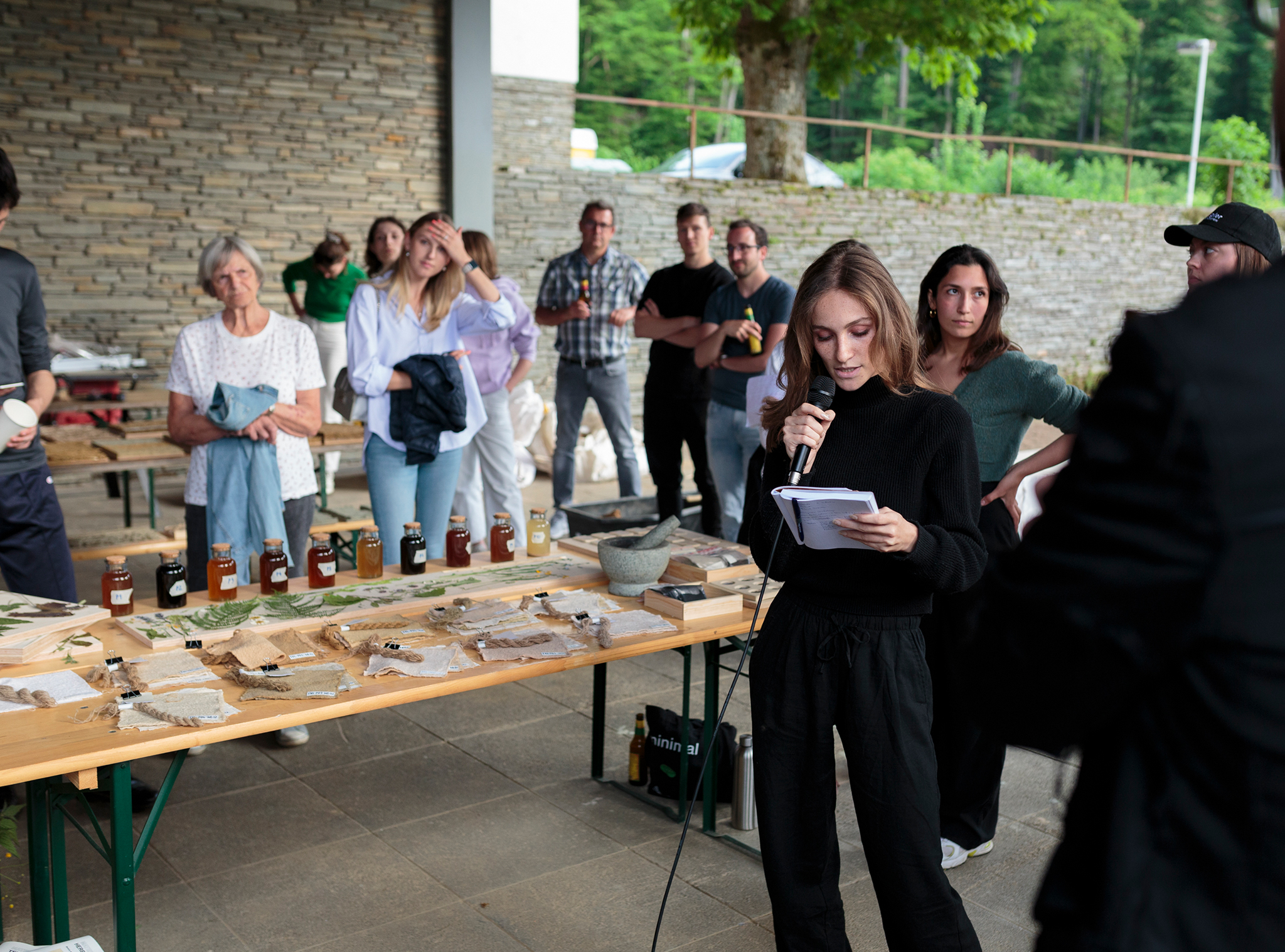
At the opening of the Material Library, the students guide their material partners, neighbours and tutors through their process.
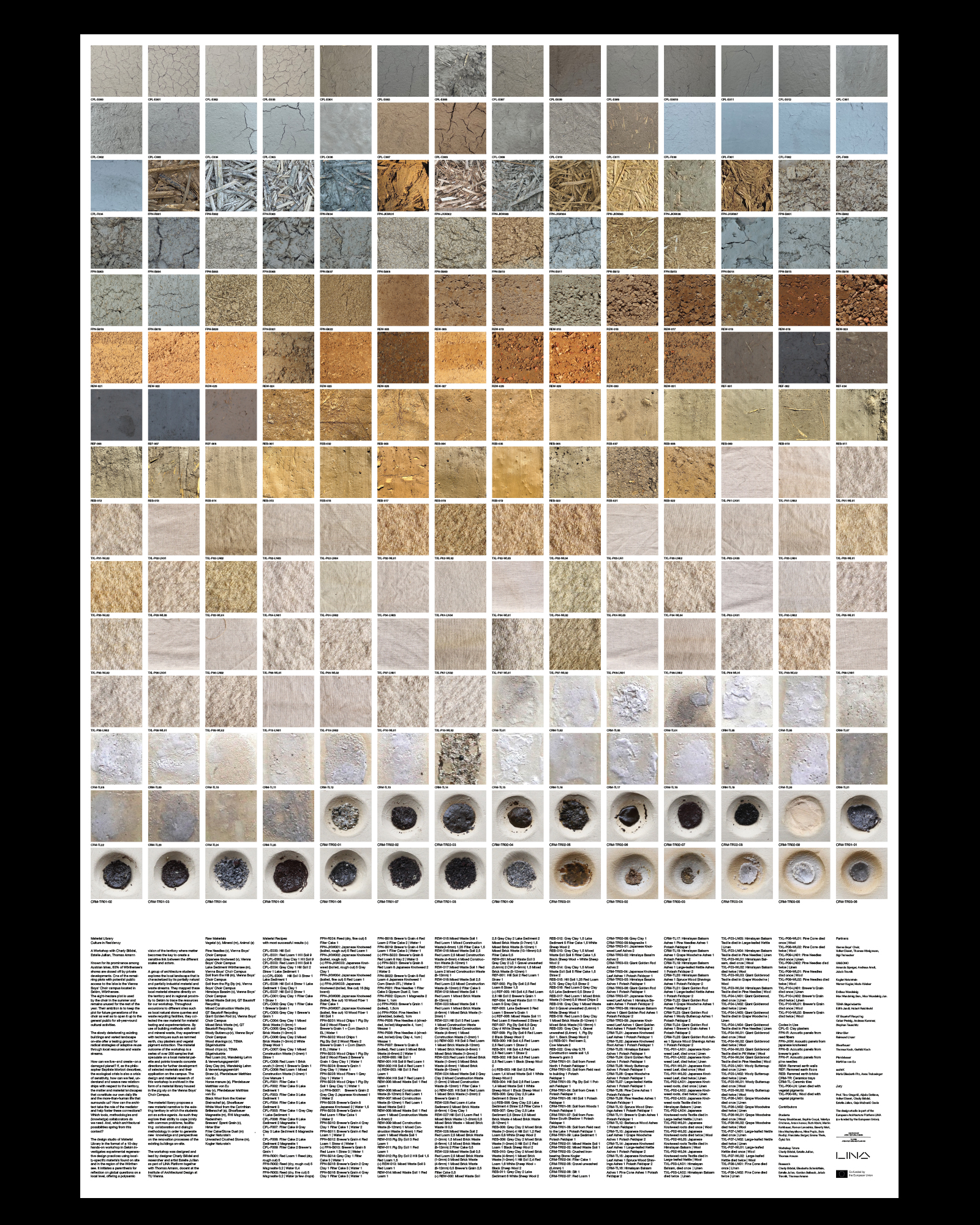
All material recipes, both failures and successes, are noted and archived in a recipe poster.
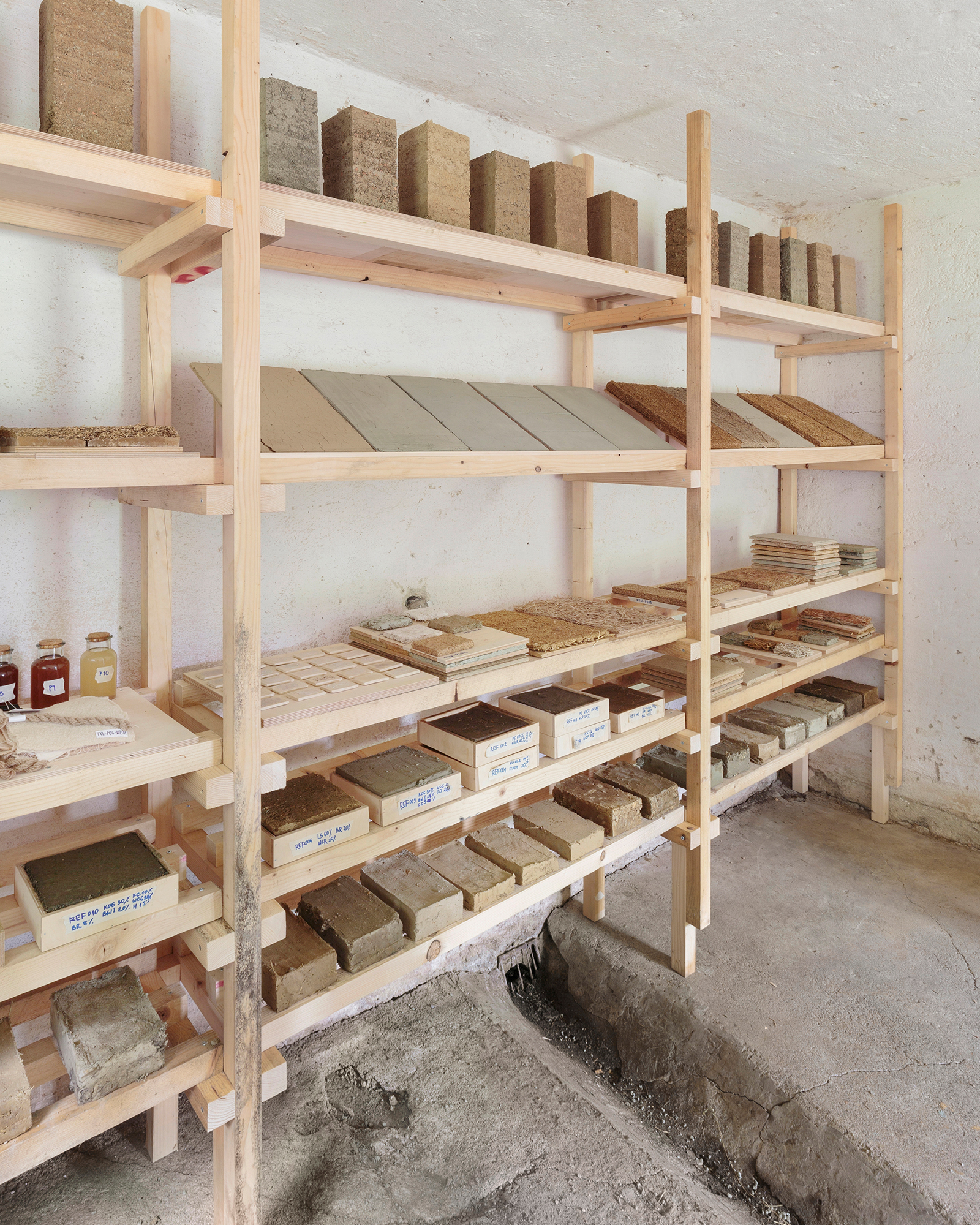
Throughout excursions to different sites such as local natural stone quarries and construction waste recycling facilities, we collected the raw material for material testing and experimentations. The outcome of the workshop is a series of material samples that speculate on a local material palette. These samples point towards concrete directions for further development of selected materials and their application on the campus. The design and material research of this workshop is archived in the form of a library for local material recipes which will be housed at the pig sty of the campus for future use and further exploration.
The material library proposes a new material narrative to the existing territory in which the students of TU Vienna act as active agents in coping jointly with common challenges, facilitating collaboration and dialogic methodologies in order to generate and draw on new knowledge(s) and perspectives in the specific context of the renovation processes on the Vienna Boys’ Choir campus.
Students
Fanny Bruckbauer, Sophie Coqui, Valeriya Gridneva, Anton Ivanov, Ruth Köchl, Martin Kohlbauer, Roman Levoshka, Beverly Mori, Irina Mezheynikova, Nina Popic, Sara Rodiqi, Franziska Sorger, Emma Theis, Öykü Tok
Workshop Tutors
Charly Blödel, Estelle Jullian, Thomas Amann
Jury
Prof. Tina Gregorič Aljoša Dekleva, Volker Dienst, Tina Gregorič, Estelle Julian, Gaja Mežnarić Osole
The design studio is part of the European Architecture Platform LINA (co-funded by the European Union).

© Charly Blödel, 2022. For more Imprint.
